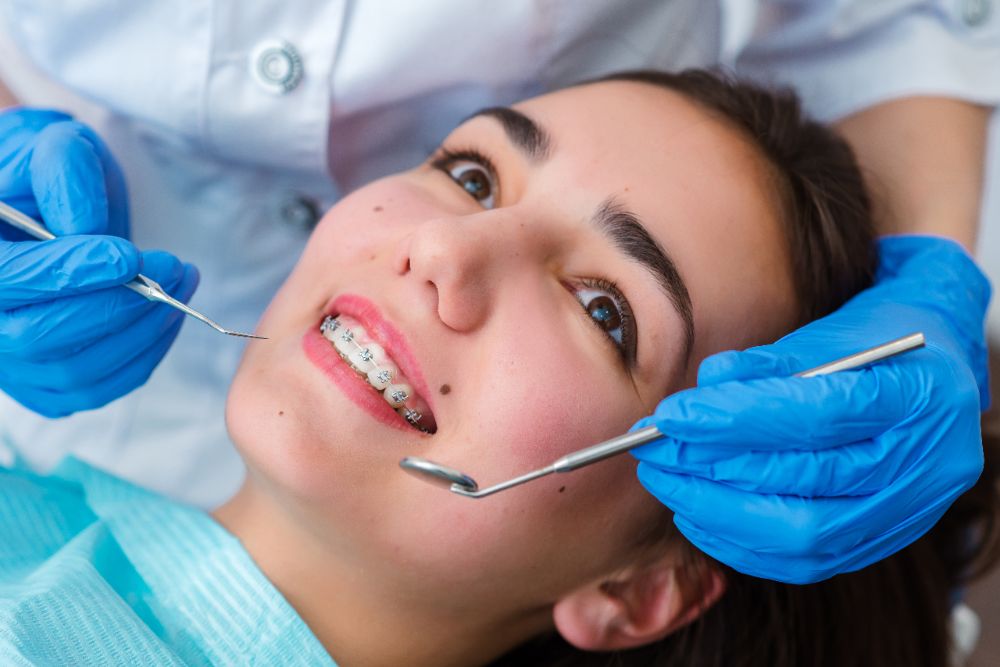Comprehensive Overview to Orthodontics Treatments for Dealing With Dental Misalignments
In the realm of orthodontics, the trip to achieving a completely aligned smile entails a myriad of procedures tailored to fix oral misalignments. From conventional dental braces to invisible aligners and even surgical options, the field of orthodontics offers a range of options to resolve differing levels of dental abnormalities. Comprehending the details of each procedure, including their devices, advantages, and possible disadvantages, is critical in making informed decisions regarding one's orthodontic treatment. As we navigate via the detailed overview to orthodontic treatments for fixing dental misalignments, the intricate information of each approach will unravel, dropping light on the path toward a functional and unified oral placement.
Orthodontic Procedures Summary

Along with clear aligners and standard dental braces, orthodontists may additionally advise various other treatments like headwear, palatal expanders, or retainers to resolve particular positioning issues (invisalign). These procedures are tailored to each individual's distinct requirements and might entail a combination of treatments to accomplish the preferred outcomes. Regular modifications and monitoring are vital parts of orthodontic treatment to make certain progression is on track and to make any kind of needed modifications along the road. By undertaking orthodontic procedures, clients can not just accomplish a straighter smile but additionally improve their total dental health and wellness and function.
Standard Dental Braces: How They Function
When considering orthodontic therapies for dental misalignments, typical dental braces stick out as a time-tested technique for fixing teeth positioning. Traditional braces consist of brackets, cords, and bands that interact to use continual pressure on the teeth, gradually relocating them right into the desired positioning. The brackets are attached to the teeth utilizing an unique adhesive, and the cords are threaded via the brackets. By readjusting the stress of the cables, orthodontists can regulate the instructions and force related to each tooth, guiding them into proper placement over time.
As stress is applied to the teeth with the braces, the bone surrounding the teeth is reshaped to support the new tooth positions. Patients will certainly require routine adjustments at the orthodontist's office to make sure the dental braces continue to apply the appropriate stress for reliable teeth movement.
Unnoticeable Aligners: Benefits And Drawbacks
These clear, personalized trays are basically unseen when used, making them an enticing option for people seeking an extra cosmetically pleasing orthodontic therapy. Clients can get rid of the aligners before consuming or brushing their teeth, minimizing the danger of food getting stuck in the appliance and simplifying the cleansing process.

Surgical Orthodontic Options
Surgical interventions in orthodontics present viable choices for addressing intricate oral imbalances that may not be efficiently dealt with with conventional orthodontic therapies. While unseen aligners and typical braces can remedy several orthodontic concerns, certain situations require surgical treatment to achieve ideal results. Surgical orthodontic choices are usually advised for extreme malocclusions, considerable jaw inconsistencies, and cases where the underlying bone framework needs modification to attain correct placement.
One common surgical orthodontic treatment is orthognathic surgical procedure, which includes repositioning the jaws to correct useful concerns such as difficulty chewing or talking. This surgical procedure is usually executed in cooperation with an orthodontist who assists line up the teeth before and after the treatment. Surgical orthodontics may also involve treatments to expose affected teeth, eliminate excess gum cells, or improve the jawbone to produce an extra harmonious facial account.
Prior to taking into consideration surgical orthodontic alternatives, patients undertake a thorough assessment to determine the necessity and prospective benefits of such interventions. invisalign. While surgical procedure might seem challenging, it can considerably enhance both the feature and looks of the smile in cases where conventional orthodontic treatments fall short
Retainers and Post-Treatment Treatment

Failure to comply with post-treatment treatment instructions can result in regression, where the teeth slowly move back in the direction of their original placements. Regular retainer wear, good oral health, and regular oral check-ups are essential for keeping the outcomes attained via orthodontic surgery and making sure the long-term stability of the fixed oral alignment.
Conclusion
In final thought, orthodontic procedures supply different alternatives for correcting oral misalignments. Surgical orthodontic options are offered for more serious imbalances. In general, orthodontic procedures can effectively improve dental health and visual appearance.
As we browse through the extensive overview to orthodontic treatments for correcting oral imbalances, the intricate details of each method will certainly unravel, shedding light on the course towards a harmonious and useful oral alignment. - cumming invisalign
One of the most typical orthodontic therapies is the usage of braces, which are composed of metal braces and wires that use gentle stress to gradually shift teeth into the desired setting.When taking into consideration orthodontic treatments for dental misalignments, traditional dental braces stand out as a time-tested dentist office technique for fixing teeth placing. In addition, unseen aligners may not be suitable for complex orthodontic issues that call for more considerable teeth activity, as they are typically recommended for moderate to modest instances. Retainers are custom-made orthodontic gadgets created to hold teeth in their remedied placements after the conclusion of orthodontic treatment.